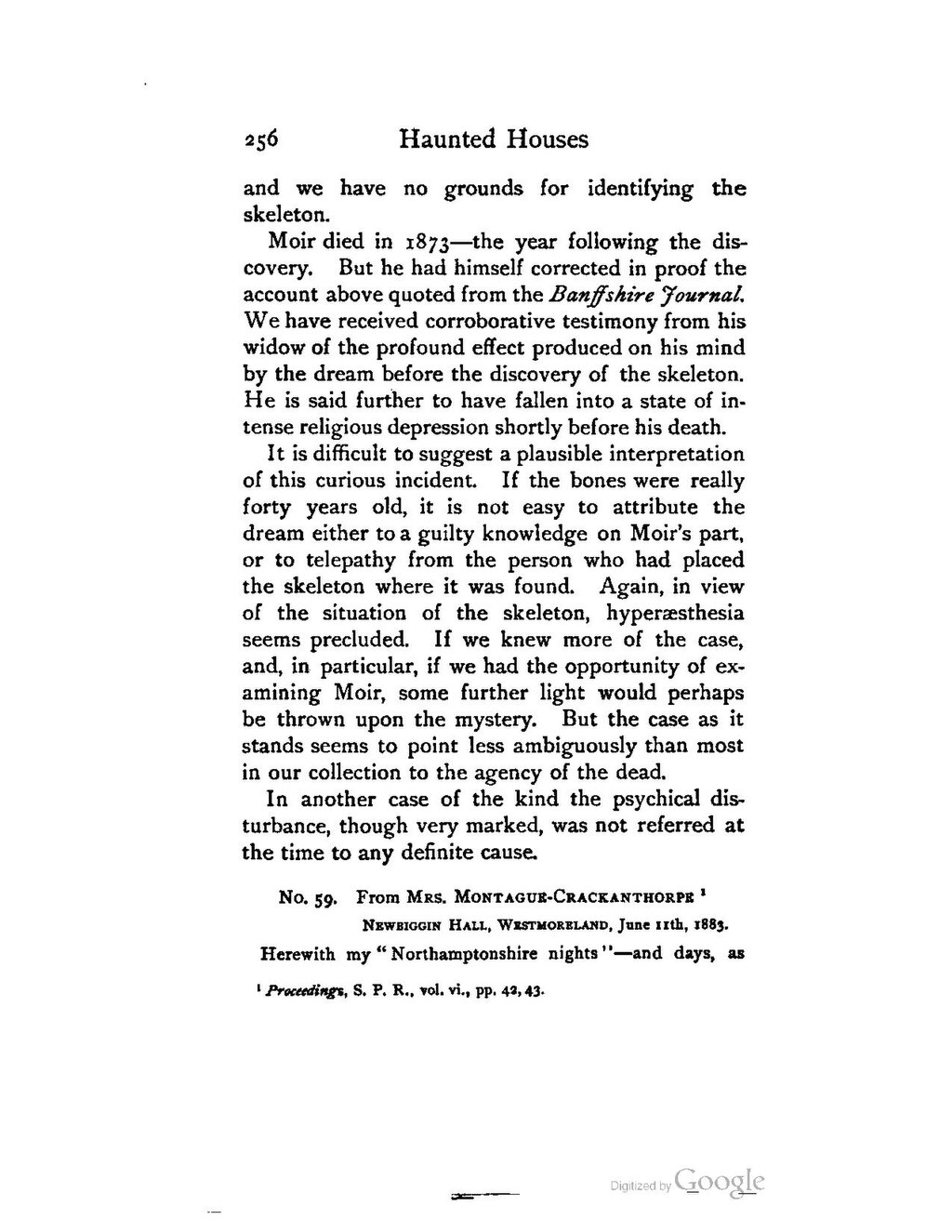and we have no grounds for identifying the skeleton.
Moir died in 1873—the year following the discovery. But he had himself corrected in proof the account above quoted from the Banffshire Journal. We have received corroborative testimony from his widow of the profound effect produced on his mind by the dream before the discovery of the skeleton. He is said further to have fallen into a state of intense religious depression shortly before his death.
It is difficult to suggest a plausible interpretation of this curious incident. If the bones were really forty years old, it is not easy to attribute the dream either to a guilty knowledge on Moir's part, or to telepathy from the person who had placed the skeleton where it was found. Again, in view of the situation of the skeleton, hyperaesthesia seems precluded. If we knew more of the case, and, in particular, if we had the opportunity of examining Moir, some further light would perhaps be thrown upon the mystery. But the case as it stands seems to point less ambiguously than most in our collection to the agency of the dead.
In another case of the kind the psychical disturbance, though very marked, was not referred at the time to any definite cause.
No. 59. From Mrs. Montague-Crackanthorpe[1]
- ↑ Proceedings, S. P. R.. vol. vi., pp. 42,43.
